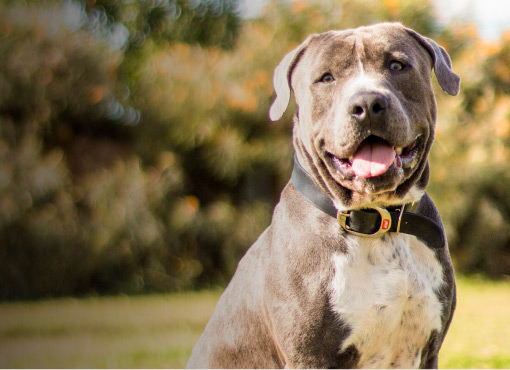Adopting another dog
The great thing about finding your existing pet a companion, is that you can bring your dog into an RSPCA centre for a meet and greet! So if you've found a potential match on the website or have asked an Adoption Counsellor for advice in matchmaking, your dog can meet an RSPCA dog onsite to see if they get along. Adoption Counsellors will advise how to conduct the introduction on lead and what behaviours they’re showing to see if they are a pawfect match! View RSPCA pets looking for a home near you.
Meeting new people
Introductions to new people should be gradual, not all at once for any animal! A surprise party would be quite overwhelming and your pet may become overwhelmed.
Ensure when meeting new people, that your pet still has access to their chill out zone in the house whether it be a quiet room or their crate. Download our factsheet for more on crate training.
Guests can have treats at the ready when meeting your pet, or your pet's favourite toy to reinforce the positive experience of meeting new people.
Pet Etiquette
Dogs are never too old to brush up on skills and manners! Enrol them into a training class to get them back to basics and behaving how you'd like them to. It's also great for helping you to understand your pet's behaviour and body language. Find a RSPCA School For Pets class near you.
Dog Parks and Off Leash Areas
Until your dog has great recall and has formed a trusting relationship with you, don't try off leash areas. Some adopted pets are still getting used to their new name, so off leash areas should be given some time, and keep in mind – they aren’t for every dog!
Felines meeting existing cats – Take your time!
If there are already cats at your residence, pick the room of least importance to the established cats. Provide a litter tray, water, food, toys, and provide a couple of cosy hidey holes for the new cat to curl up in, preferably one up high like a cat tower.
Ideally, your new cat will need to have a couple of weeks in this room to get used to the smells and sounds of your home. You should try to spend a little time in this room each day so the cat can start to build a relationship with you as well. Some cats can take longer than others to adjust to their human and feline companions, whilst it will take less time for others.
Tip: Swap smells!
If you have a multi-cat household, exchange bedding between the cats, so that they can start to get used to the smell of each other. After about a week, limited interaction may occur under the door between the new cat and the established cats. Begin to allow the new cat access to more of the house.
In multi-cat households, this is best done when the established cat is in a different part of the house. Also allow the established cat to explore the room where your new cat has been.
After two weeks, your felines can meet! Bring your new cat in a carrier into the area where the established cat is. Tip: Nom Noms! Feed both cats during this short interaction to help reduce stress.
Continue doing this over an extended period of time moving the established cats bowl closer to the cat carrier each time. When the cats are eating happily side by side it is time for short, supervised, direct interactions to begin during feeding. Following this, allow cats to walk around and sniff each other. Reward friendly behaviour with treats. Gradually increase the supervised time together.
Tip: Supervision!
Do not leave your new cat and existing cats together unsupervised until several supervised interactions without aggression have occurred. The process of introducing a new cat may take several weeks. Older cats may need a quiet space away from kittens for an extended period of time. On the other hand, friendly, well- socialised cats may adapt to each other rapidly!
Tip: Calm me down
Pheromone products may ease stress between your felines and should be used in conjunction with gradual introduction. Feliway diffusers and sprays can be purchased at RSPCA World for Pets.
Tip: Poo-wee!
Toileting problems can arise in multi-cat households. Why? Some cats won't use a litter tray used by other cats, or even when already used. It's ideal to have one litter tray per cat in your household and in multiple rooms (not all together). It gives your felines some added privacy. No cat wants to have others watching them doing a number 2!
If you have questions about your newly adopted pet contact the RSPCA on 07 3426 9999 or for behaviour training contact our team via [email protected].



